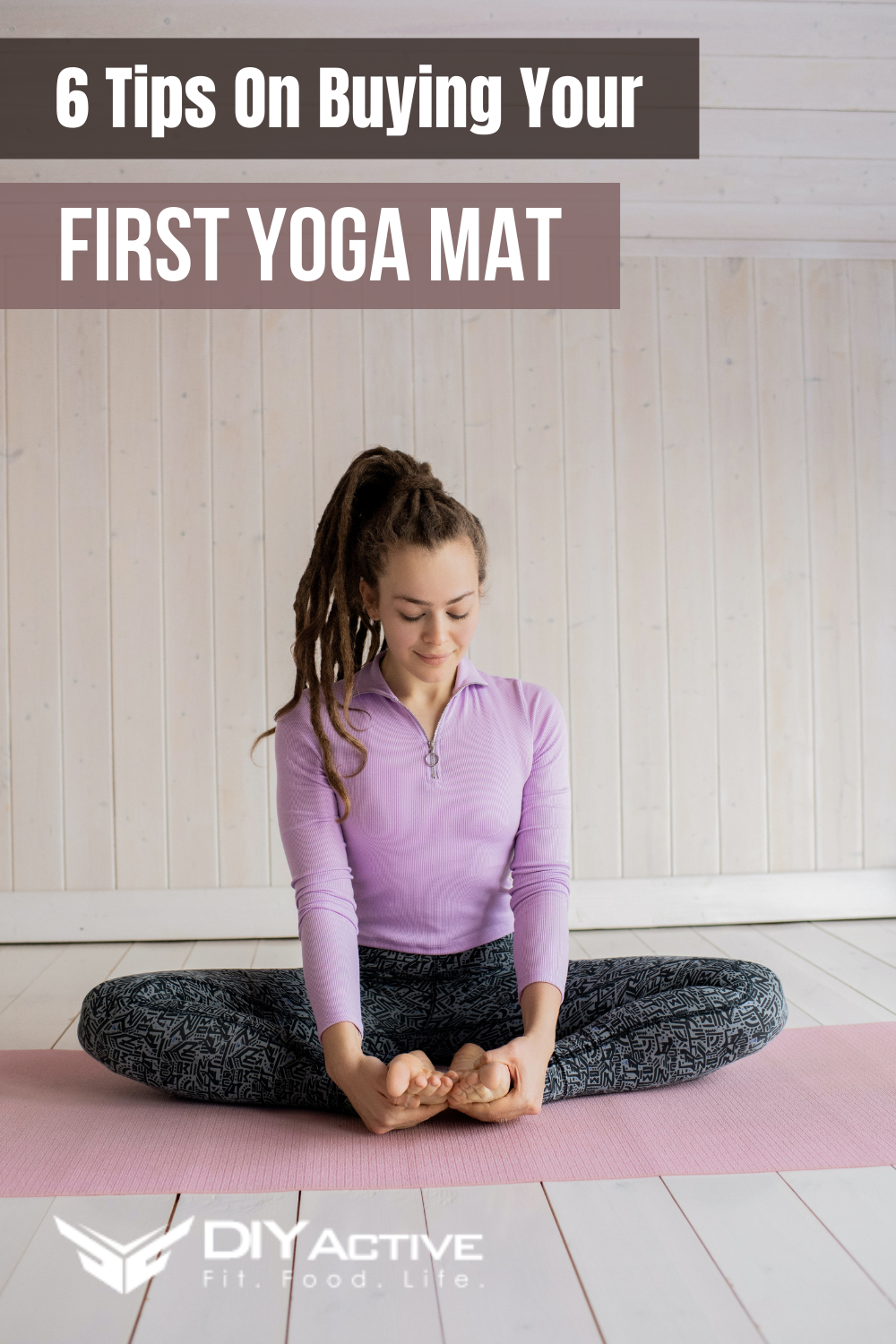
This post may contain affiliate content from which we earn a small commission at no additional cost to you. Read our full disclosure.
Tips On Buying Your First Yoga Mat
Yoga has long been lauded for its beneficial impacts on overall wellbeing. It also has fewer equipment requirements than other forms of exercise. A simple yoga mat is all you need to get started.
Buying Your First Yoga Mat
If you’re just starting with yoga, you may be looking for a new yoga mat to use for practice. Although there are many choices, most yoga mats are suitable for all types of yoga.
Choosing among many options is often a matter of personal taste. However, there are some considerations when buying. Read on for several tips on how to choose a yoga mat.
1. Thickness Matters
When it comes to comfort, the thickness of the yoga mat matters a lot. If your mat is too thin, you run the risk of banging your knee when doing some poses. On the other hand, thick yoga mats may make it more difficult to maintain firm contact with the floor throughout your practice.
Many online shops like Pixels and others offer yoga mats with a range of thicknesses. Yoga mats range in thickness from 1/8 inch to 1/4 inch, depending on the brand. It’s also possible to get travel yoga mats that have a thickness of only 1/16 inch. They’re lightweight and foldable, so they can be tucked away in a bag easily.
When it comes to picking the thickness of your yoga mat, think about how much space you have and how essential portability is. You should also consider where your balance point is in terms of comfort and contact with the floor.
2. Consider The Material
Knowing the material of the yoga mat is also essential. The material used to make the yoga mat determines its smoothness, adhesion, eco-friendliness, wobbliness, and longevity. Regular yoga mats are usually composed of PVC (sometimes called vinyl).
More eco-friendly alternatives include things like recycled rubber or naturally grown cotton. This indicates that the mat hasn’t been treated with synthetic compounds throughout the production process.
If you have a latex allergy, stay away from yoga mats derived from natural rubber. Those who like sticky mats may choose a PVC yoga mat that’ll last for years, even with everyday use.
 3. Be Wise On The Size
3. Be Wise On The Size
A rule of thumb is to get a yoga mat that’s about six inches longer than your height. When doing yoga poses that require you to lay down, you must be able to lay properly on your mat sans your arms or legs protruding further than the mat.
For those with larger frames, an extra-wide yoga mat will provide you with more room to move about on the mat without feeling pressed in.
4. Choose The Right Texture
Texture matters when it comes to slipping and sliding. It acts as a physical barrier to prevent people from slipping and falling. It also contributes to overall comfort since texture has an impact on how a yoga mat feels.
For a non-slip yoga mat, opt for a raised textured design on a rubber or cotton mat instead of conventional sticky yoga mats such as PVC. Even if you’re sweating or working hard throughout your practice, the raised texture’s additional grip may allow you to stay in place, allowing you to achieve the best possible benefits.
A PVC yoga mat is the best option if you prioritize smoothness above everything else. Likewise, if you’re a fanatic for stickiness but eager about newer, greener alternatives, try out other options before you purchase.
Eco-friendly yoga mats like Pureful Yoga offer surprising amounts of grip despite not having the typical sticky feel.
5. Consider The Earth Too
Yoga mats that are good for the environment are usually constructed of recycled or natural rubber. If you care about the environment, avoid purchasing yoga mats made of PVC. This material doesn’t disintegrate in landfills, and recycling them is time-consuming and expensive.
There are also plenty of options for eco-friendly yoga mats. Yoga mats made of rubber or cotton come in a variety of thicknesses. They’re also generally thicker and slicker than PVC mats. There are yoga mats available that are eco-friendly, comfortable, and portable with a non-slip feel.
6. Do Your Research
It’s always a good idea to read online customer reviews before purchasing a mat. Try talking to a few folks at your yoga lesson to find out what they appreciate about their mat and where they bought it.
Yoga instructors also have a preferred mat, so remember to inquire with them as well.
Wrap-Up
When looking for a yoga mat, there are a number of things to keep in mind. Consider your requirements and take into account the type of material you wish to use.
Lastly, don’t forget to consider features like texture and thickness. Understanding these tips will help you find the perfect yoga mat.
Disclosure: In the spirit of full disclosure, DIYactive.com may be compensated in exchange for featured placement of certain reviews or links on this website. View our full disclosure.

 3. Be Wise On The Size
3. Be Wise On The Size

